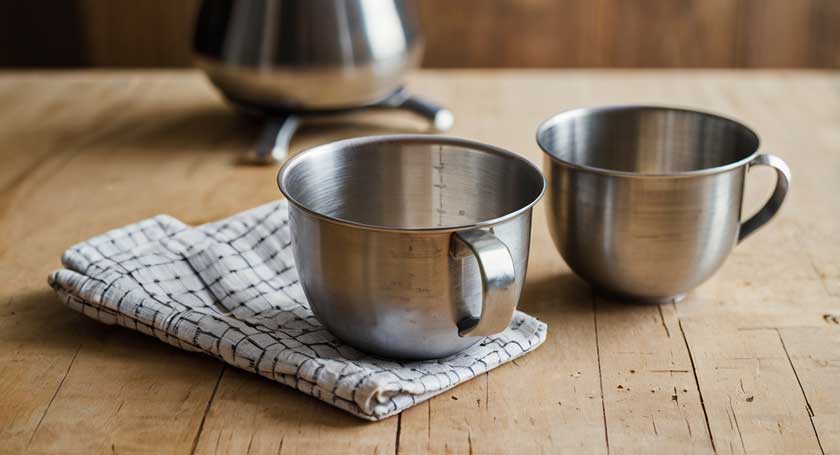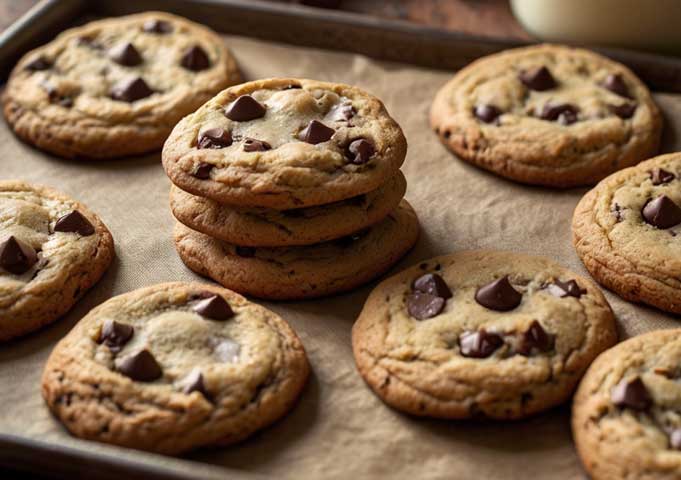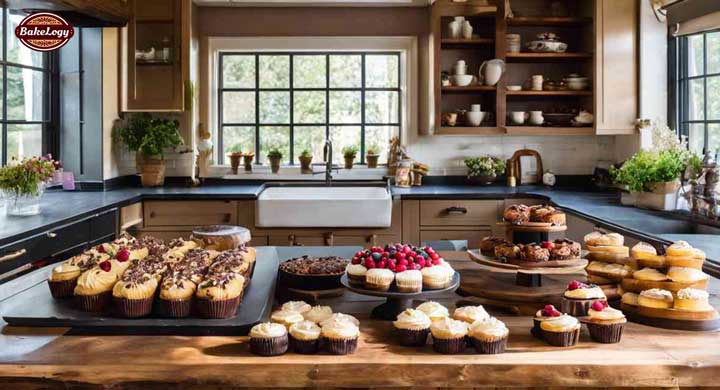Become a kitchen measurement pro with our guide on the converting tablespoons to cups effortlessly! Whether you’re a novice cook or a seasoned chef, mastering these conversions—like how many tbsp are in a cup or how many tablespoon in cup—can make or break your recipe. In cooking, precision is key, and understanding how to accurately switch between different measurements, such as how many oz is in one cup or how many quarts are in a cup, will take your culinary skills to the next level.
Say goodbye to second-guessing and hello to confidence in the kitchen as we break down this common kitchen conversion for you. No more struggling to figure out how many ounces in one cup or how many oz to one cup—we’ve got you covered with simple and practical tips to streamline your cooking process.
Read on to discover the magic of converting tablespoons to cups seamlessly, saving you time and ensuring your dishes turn out perfectly every time. Whether you’re wondering how many ounces are a cup or need a quick reference for how many ounces is in one cup, we’ve got all the answers. Let’s elevate your cooking game and banish measuring mishaps once and for all!
The Importance of Accurate Measurements in Cooking
- Achieving Desired Outcomes
- Cooking is often compared to a science, where each ingredient plays a unique role in the final product.
- Even slight measurement errors can lead to disastrous results, affecting taste, texture, and presentation.
- Precision is especially crucial in baking—too much flour can make bread dense, while too little sugar may leave cookies bland.
- Understanding accurate measurements can elevate your culinary skills and enhance your cooking experience.
- Ensuring Consistency
- Accurate measurements help maintain consistency in your cooking.
- Whether preparing a family favorite or trying a new recipe, replicating success is key.
- Consistent results build confidence and allow precise adjustments, ensuring predictable outcomes.
- Professional chefs rely on precise measurements to deliver high-quality dishes to customers.
- Saving Time and Reducing Waste
- Measuring accurately eliminates unnecessary trial and error.
- Reduces ingredient waste and time spent on redoing recipes.
- Enhances efficiency, particularly when cooking for a crowd or meal prepping.
Mastering accurate measurements is an essential skill for anyone looking to improve their cooking techniques and achieve culinary success.
Converting tablespoons to cups: The basics
When it comes to converting tablespoons to cups, it’s essential to grasp the basic relationship between these two measurements. A tablespoon is a smaller unit of measurement compared to a cup, and knowing how to navigate this conversion is crucial for any kitchen endeavor. Specifically, there are 16 tablespoons in one cup. This straightforward ratio serves as the foundation for any conversion you may need to perform, whether for a recipe adjustment or ingredient substitution.
To convert tablespoons to cups, you can use a simple formula: divide the number of tablespoons by 16. For example, if a recipe calls for 8 tablespoons of an ingredient, you would divide 8 by 16, resulting in 0.5 cups. This fundamental calculation can be easily applied to various quantities, making it a handy skill for any cook. It’s worth noting that this conversion is particularly helpful when scaling recipes up or down, allowing you to maintain the correct proportions of your ingredients.
Understanding the basics of this conversion not only simplifies your cooking process but also empowers you to feel more confident in the kitchen. With a firm grasp of the relationship between tablespoons and cups, you can tackle recipes with ease, knowing exactly how to adjust measurements as needed. As we dive deeper into the nuances of these conversions, you’ll discover additional tips and tricks that will further enhance your culinary journey.
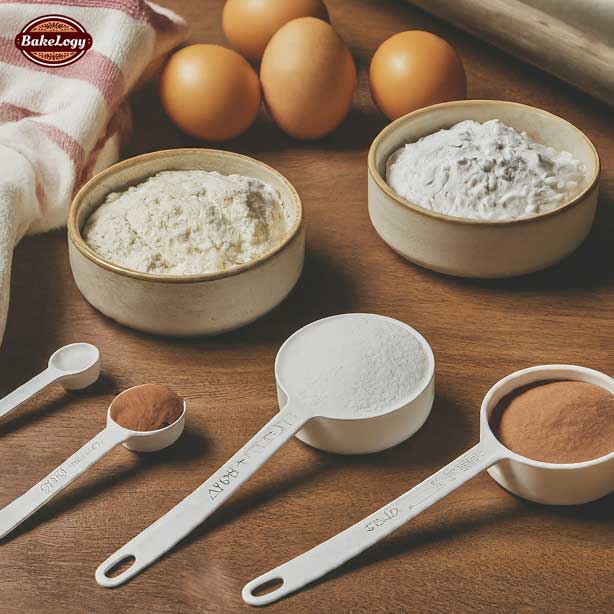
Converting tablespoons to cups: Common conversions
The most common conversions between tablespoons and cups can serve as a quick reference guide for your cooking adventures. As previously mentioned, 16 tablespoons make up one cup. This fundamental measurement can be broken down into smaller increments for ease of use. For instance, if you need to convert 4 tablespoons, that equals 0.25 cups, while 8 tablespoons equals 0.5 cups. Understanding these common conversions can save you time and help streamline your cooking process without the need for constant calculations.
Additionally, it’s helpful to know that 1 tablespoon is equivalent to approximately 0.0625 cups. This relationship can assist in smaller measurements. For example, if you need just 2 tablespoons, you can quickly determine that this is about 0.125 cups. Familiarizing yourself with these conversions allows you to work more efficiently in the kitchen, especially when a recipe lists ingredients in tablespoons but you prefer to measure in cups.
In practice, having a cheat sheet or mental note of these common conversions can reduce the stress of measuring and enable you to focus more on the cooking process. It also fosters a greater understanding of ingredient proportions, which is crucial when you’re experimenting with new recipes or adapting existing ones. By mastering these common conversions, you empower yourself to approach any recipe with confidence and precision.
Handy kitchen tools for precise measurements
Having the right tools in your kitchen can make a world of difference when it comes to precise measurements. Investing in a good set of measuring cups and spoons is essential for any cook. Measuring cups are usually available in both dry and liquid forms, each designed to provide the most accurate measurements for their respective purposes. For instance, liquid measuring cups typically have a spout for pouring, while dry measuring cups are designed to be filled to the brim and leveled off for accurate measurements.
In addition to cups and spoons, a kitchen scale can be an invaluable tool for achieving precision. While many recipes provide measurements in volume (like cups and tablespoons), using weight (grams or ounces) can often yield more consistent results, especially for dry ingredients. A digital kitchen scale allows you to measure ingredients accurately, ensuring that your recipes turn out as intended every time. This is particularly useful when dealing with ingredients like flour or sugar, where even small variations can affect the final product.
Another handy tool for precise measurements is a set of measuring spoons with clear markings. These spoons often come in nested sets, which can be easily stored and provide accurate measurements for both liquid and dry ingredients. Additionally, consider using adjustable measuring spoons, which can accommodate various quantities with a simple slide. By equipping your kitchen with these essential tools, you can save time and increase accuracy in your cooking, leading to consistently delicious results.
Tips and tricks for successful measurement conversions
To further enhance your ability to convert tablespoons to cups, a few tips and tricks can streamline the process. Firstly, make use of visual aids, such as measuring charts or conversion calculators, which can be found online or in cooking apps. These resources can serve as quick references when you’re in the middle of cooking and need to make a conversion without delay. Having a printed chart on your fridge or easily accessible on your phone can save you from the hassle of searching for the information while your dish is sizzling on the stove.
Another helpful tip is to practice measuring ingredients in tablespoons and cups regularly. Familiarity with these measurements will allow you to develop a sense of how much a tablespoon or a cup represents in terms of volume. Over time, you’ll gain confidence in your ability to convert measurements intuitively, making the cooking process flow more smoothly. This practice can also help you recognize when a recipe calls for an excessive amount of an ingredient, allowing you to adjust accordingly.
Lastly, always remember to level off dry ingredients when measuring with cups and spoons. This simple technique ensures that you’re using the exact amount called for in the recipe. For example, when measuring flour, use a spoon to scoop it into a measuring cup, then use a straight edge, like a knife, to level it off. This practice prevents packing, which can lead to over-measuring and ultimately affect the outcome of your dish. By incorporating these tips and tricks into your cooking routine, you’ll become adept at measurement conversions, making your culinary experiences more enjoyable.
Converting tablespoons to cups in baking recipes
When it comes to baking, precision is paramount, and understanding how to convert tablespoons to cups can significantly impact your results. Many baking recipes will specify ingredients in tablespoons, especially when dealing with smaller quantities. For instance, if you encounter a recipe that calls for 12 tablespoons of butter, knowing that this converts to 0.75 cups can help you prepare your ingredients accurately. This knowledge allows you to follow recipes more closely and ensures your baked goods turn out as intended.
In baking, specific ingredients often require exact measurements. For example, when measuring granulated sugar or baking powder, even slight variations can alter the texture and flavor of your final product. Therefore, being able to convert tablespoons to cups quickly is essential to maintaining the integrity of the recipe. If a recipe calls for multiple measurements in tablespoons, converting them to cups can simplify the preparation process, allowing you to gather your ingredients with ease.
Another useful tip when converting tablespoons to cups in baking is to keep a measuring spoon handy while you work. If you find yourself needing to make quick adjustments, having the tools at your fingertips can save you time and help maintain your workflow. Remember that baking is a delicate balance of ingredients, and being precise not only ensures better results but also enhances your baking skills over time.
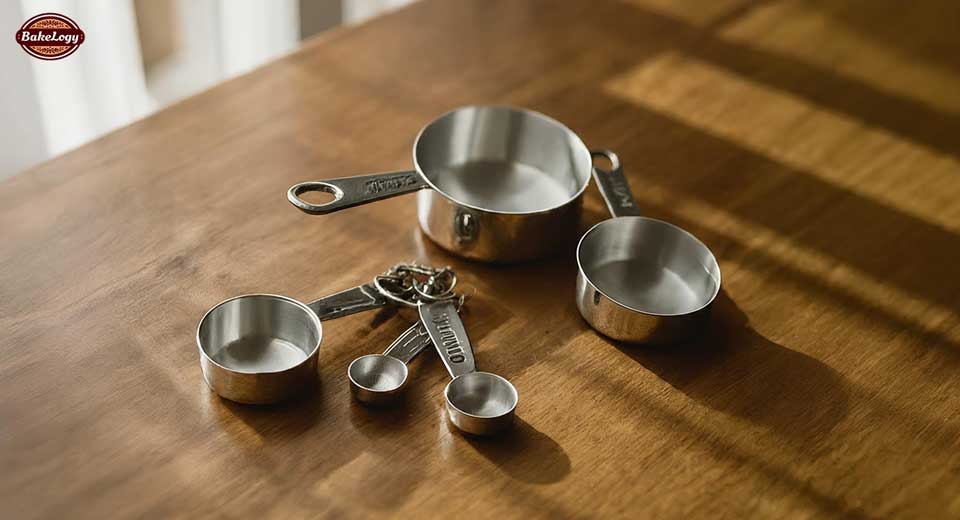
Converting tablespoons to cups in cooking recipes
In cooking, the flexibility of measurements is often more forgiving than in baking. However, knowing how to convert tablespoons to cups remains essential, especially when it comes to preparing sauces, marinades, or dressings where ingredient ratios matter. For instance, if a recipe requires 6 tablespoons of olive oil, converting it to 0.375 cups can help you visualize the quantity and streamline your cooking process. This understanding allows you to adjust your measurements based on personal preference or available ingredients.
When cooking, it’s common to encounter recipes that list ingredients with a variety of measurements. By converting tablespoons to cups, you can simplify the ingredient list and make it easier to prep your meal. For example, if a recipe calls for 4 tablespoons of soy sauce and 8 tablespoons of vinegar, knowing that this equals 0.25 cups and 0.5 cups, respectively, can help you gather your ingredients more efficiently and reduce the chance of miscalculating amounts.
Moreover, being adept at converting tablespoons to cups allows you to adjust recipes according to portion sizes. If you’re cooking for a larger group or want to prepare a smaller meal, understanding these conversions enables you to scale your ingredients accurately. This skill not only enhances your cooking experience but also allows you to experiment with flavors and ingredient combinations, leading to more creative and enjoyable meals.
Converting tablespoons to cups for liquid ingredients
When dealing with liquid ingredients, converting tablespoons to cups is particularly straightforward and essential for achieving the right balance of flavors. Many recipes will specify liquid measurements in tablespoons, especially when it comes to dressings, sauces, and marinades. For instance, if a recipe calls for 10 tablespoons of broth, knowing that this translates to 0.625 cups helps you measure accurately and prepare your dish without any guesswork.
One important aspect of measuring liquids is to consider the type of measuring cup you use. Liquid measuring cups typically have clear markings and a spout for easy pouring, which makes them ideal for accurate measurements. When filling a liquid measuring cup, ensure that you pour until the liquid reaches the desired mark, checking at eye level for precision. This careful attention to detail ensures that your recipes turn out as intended, with the right balance of ingredients.
Additionally, when converting tablespoons to cups for liquid ingredients, it’s helpful to remember that some liquids may have slightly different densities, which can affect their volume. For instance, ingredients like honey or syrup may behave differently than water or broth. However, for most cooking purposes, using the standard conversion of 16 tablespoons to 1 cup will suffice. With this knowledge in hand, you can confidently measure liquid ingredients, enhancing the overall quality of your cooking.
Converting tablespoons to cups for dry ingredients
Converting tablespoons to cups for dry ingredients can be a bit more nuanced compared to liquids, as the density and texture of dry ingredients can vary significantly. For example, flour and sugar will occupy different volumes even when measured in the same way. This variability makes it crucial to understand how to measure dry ingredients accurately to ensure consistent results. For instance, if a recipe requires 12 tablespoons of flour, you can convert this to 0.75 cups, but be sure to level off the flour in the measuring cup to avoid overmeasuring.
When measuring dry ingredients, it’s essential to use the right technique to ensure accuracy. For instance, when measuring flour, use a spoon to scoop it into the measuring cup, then level it off with a straight edge. This method prevents packing and ensures you’re using the correct amount. Similarly, ingredients like brown sugar should be packed into the measuring cup before leveling, as this affects the overall measurement. Understanding these nuances can help you achieve more accurate results when converting tablespoons to cups.
Furthermore, when converting tablespoons to cups for dry ingredients, keep in mind that some ingredients may require different measurements depending on the recipe. For example, spices and herbs may be used in smaller quantities, and understanding their conversions can help you maintain the intended flavor profile of your dish. By mastering these measurements, you can elevate your cooking skills and ensure that your dishes turn out perfectly every time.
Conclusion: Enhancing your cooking skills through accurate measurements
In conclusion, mastering the art of converting tablespoons to cups is an invaluable skill that enhances your cooking experience and improves the quality of your dishes. If you’ve ever wondered how many tablespoons in a cup, how many tbsp is in a cup, or how many tablespoons to a cup, understanding these conversions will give you confidence in the kitchen. Accurate measurements are essential in both cooking and baking, where precision can significantly impact flavor, texture, and presentation. Knowing how many tablespoons are in a cup, tbsp in a cup, or a cup is how many tablespoons ensures that your recipes turn out just right.
Equipping your kitchen with the right tools, such as measuring cups, spoons, and a kitchen scale, can further enhance your ability to measure accurately. If you’re ever unsure about how many tablespoons in 1/4 cup, is 4 tbsp a cup, or is 8 tablespoons equal to 1/2 cup, having a reliable reference can make a huge difference. Additionally, incorporating tips and tricks for successful conversions into your cooking routine will streamline your process and reduce the chances of measuring mishaps. Whether you’re preparing a simple dinner or an elaborate baked good, these skills will serve you well in achieving consistent and delicious results.
Ultimately, the journey to becoming a proficient cook involves a commitment to learning and practicing measurement techniques. Questions like is a tablespoon metric or imperial, is tablespoon capitalized, or is teaspoon a unit may arise, and the more you familiarize yourself with these concepts, the more intuitive measuring will become. With each recipe, you have the opportunity to refine your skills and develop a deeper understanding of ingredient proportions. By embracing the importance of accurate measurements—whether it’s is a 1/4 cup 2 ounces, i cup how many tablespoons, or is half pint equal to 1 cup—you’ll not only elevate your cooking game but also enjoy the process of creating delicious meals for yourself and your loved ones. Happy cooking!
